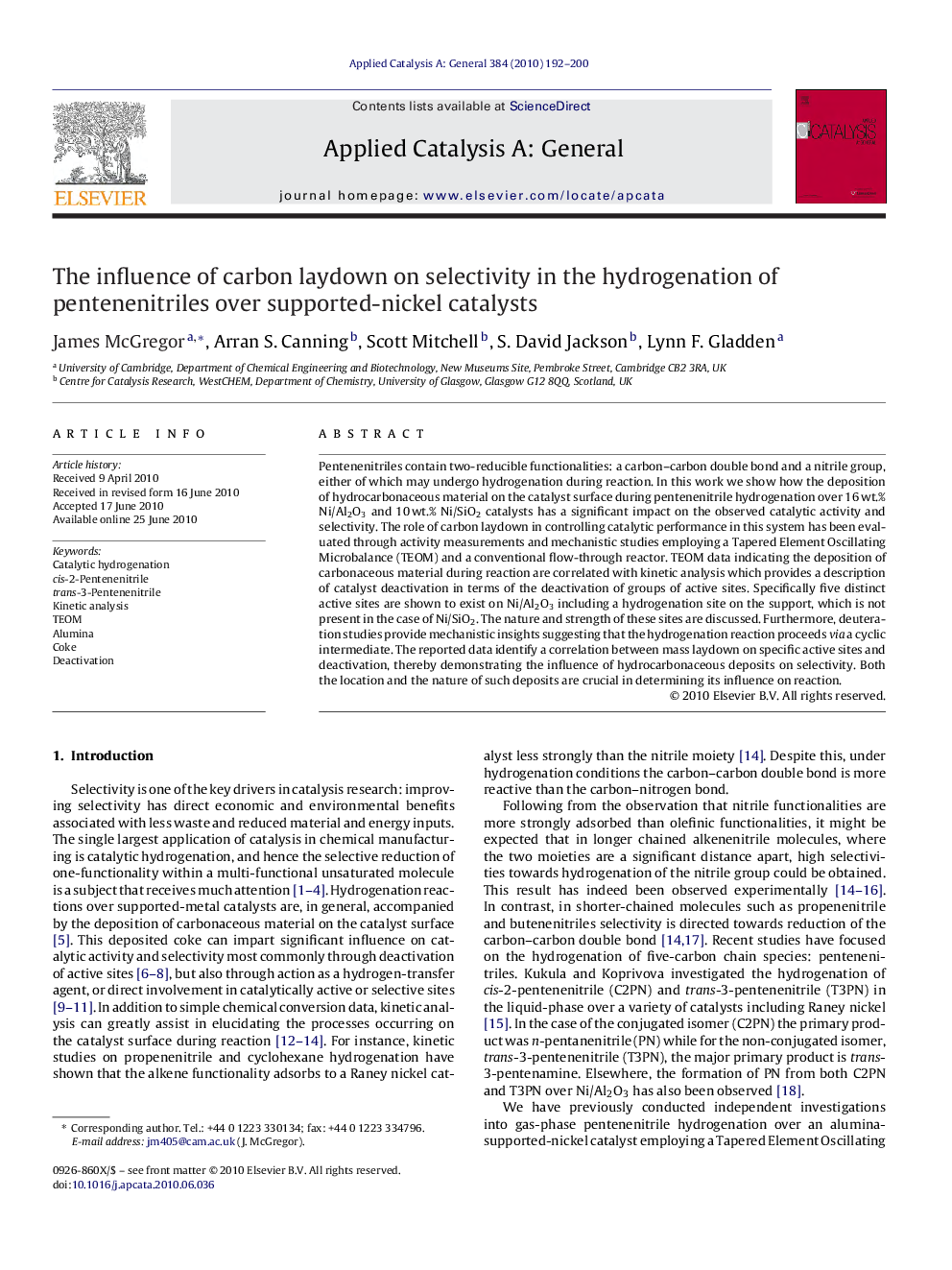| Article ID | Journal | Published Year | Pages | File Type |
|---|---|---|---|---|
| 41953 | Applied Catalysis A: General | 2010 | 9 Pages |
Pentenenitriles contain two-reducible functionalities: a carbon–carbon double bond and a nitrile group, either of which may undergo hydrogenation during reaction. In this work we show how the deposition of hydrocarbonaceous material on the catalyst surface during pentenenitrile hydrogenation over 16 wt.% Ni/Al2O3 and 10 wt.% Ni/SiO2 catalysts has a significant impact on the observed catalytic activity and selectivity. The role of carbon laydown in controlling catalytic performance in this system has been evaluated through activity measurements and mechanistic studies employing a Tapered Element Oscillating Microbalance (TEOM) and a conventional flow-through reactor. TEOM data indicating the deposition of carbonaceous material during reaction are correlated with kinetic analysis which provides a description of catalyst deactivation in terms of the deactivation of groups of active sites. Specifically five distinct active sites are shown to exist on Ni/Al2O3 including a hydrogenation site on the support, which is not present in the case of Ni/SiO2. The nature and strength of these sites are discussed. Furthermore, deuteration studies provide mechanistic insights suggesting that the hydrogenation reaction proceeds via a cyclic intermediate. The reported data identify a correlation between mass laydown on specific active sites and deactivation, thereby demonstrating the influence of hydrocarbonaceous deposits on selectivity. Both the location and the nature of such deposits are crucial in determining its influence on reaction.
Graphical abstractFigure optionsDownload full-size imageDownload high-quality image (84 K)Download as PowerPoint slideResearch highlights▶ Five distinct active sites identified on the surface of Ni/θ-Al2O3. ▶ Pentenenitrile hydrogenation proceeds via a cyclic intermediate over nickel sites. ▶ θ-Al2O3 is catalytically active for the hydrogenation of pentenenitriles. ▶ Different pentenenitrile isomers show different activity and selectivity profiles. ▶ Coke directs selectivity by preferentially deactivating groups of active sites.
